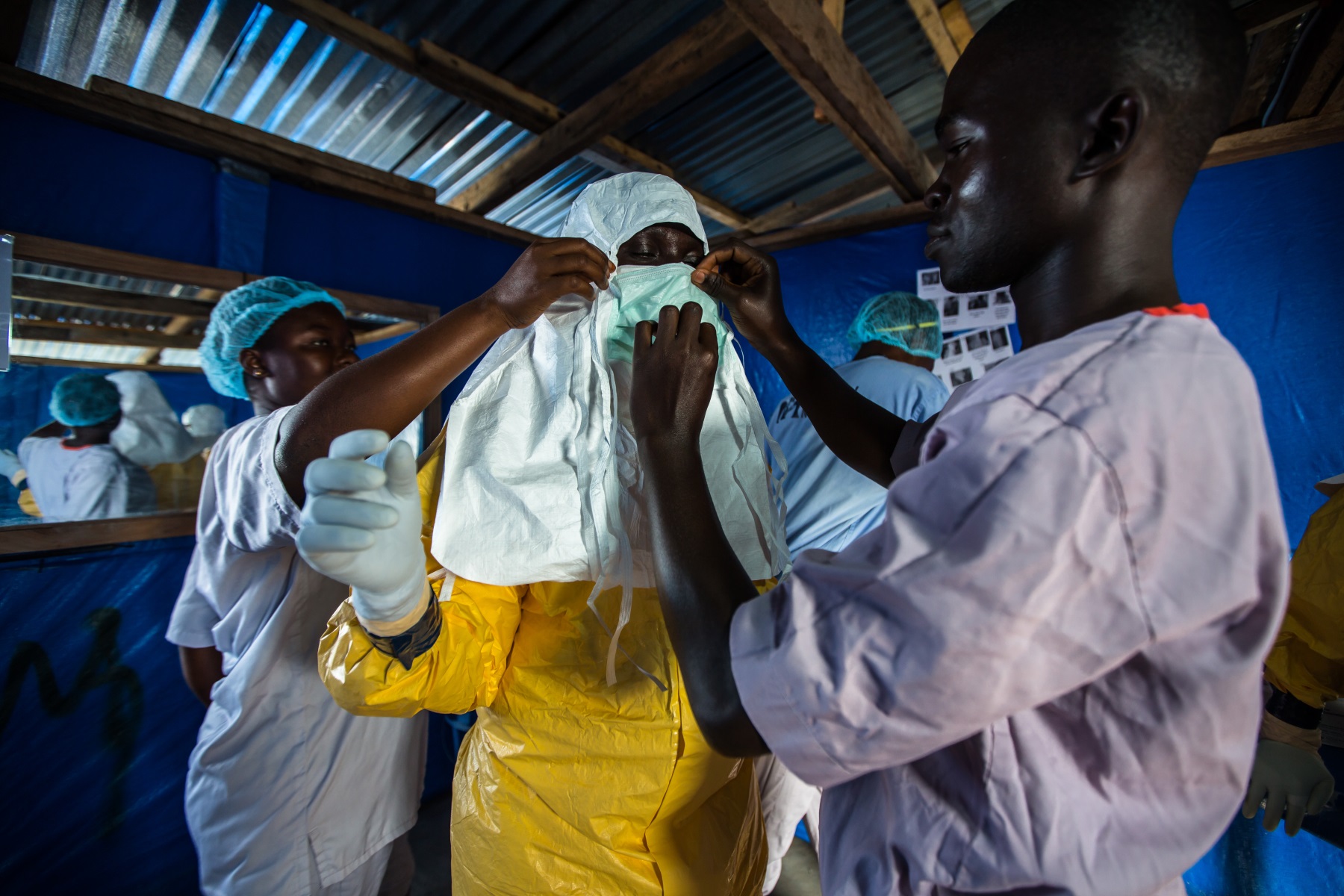The first reports of an Ebola outbreak in Guinea reached the Centers for Disease Control and Prevention in spring 2014. The deadly virus raged through West Africa, infecting more than 28,000 people and killing more than 11,000.
The CDC was one of the organizations coordinating efforts on the ground, and, from the beginning, saw the epidemic as a historical moment.
“It became really apparent that this was an outbreak turning into an epidemic of epic proportion,” said Louise E. Shaw, the curator for the David J. Sencer CDC Museum. “It was so evident that it was a historical magnitude that we started collecting materials.”
The museum now has an exhibit on view called “Ebola: People + Public Health + Political Will.” It features photographs and artifacts collected during the epidemic. There are unused burial crosses, hotline phones that allowed rural areas to report outbreaks and T-shirts with messages that inform communities about the disease.






